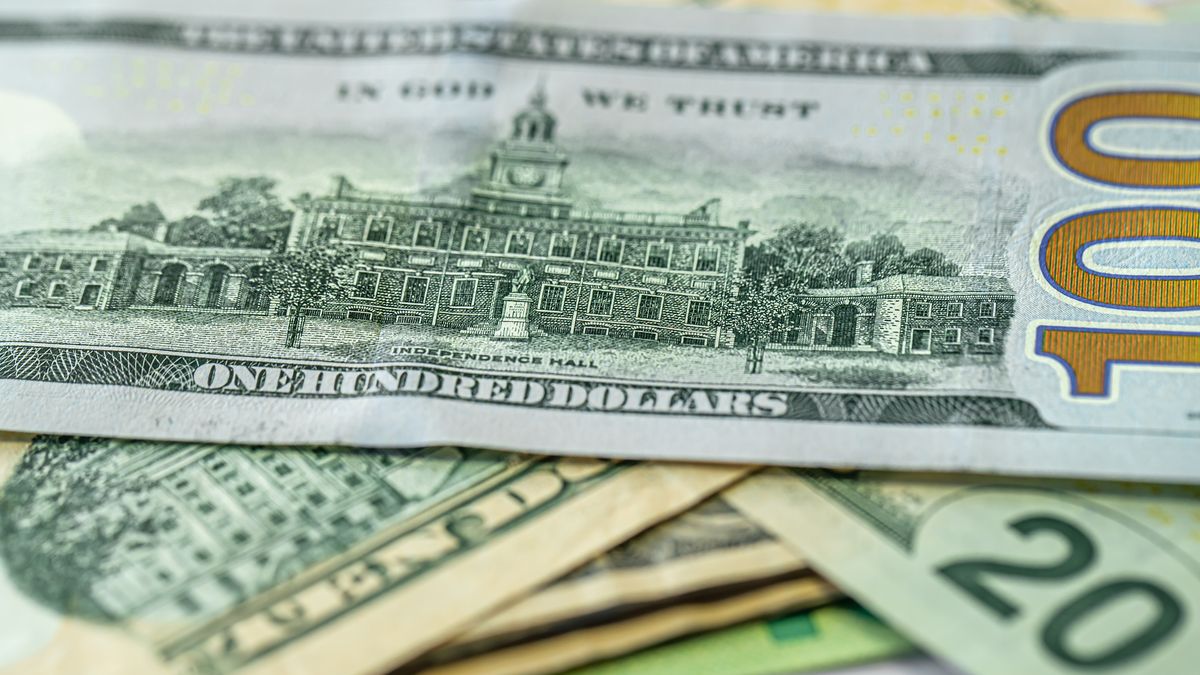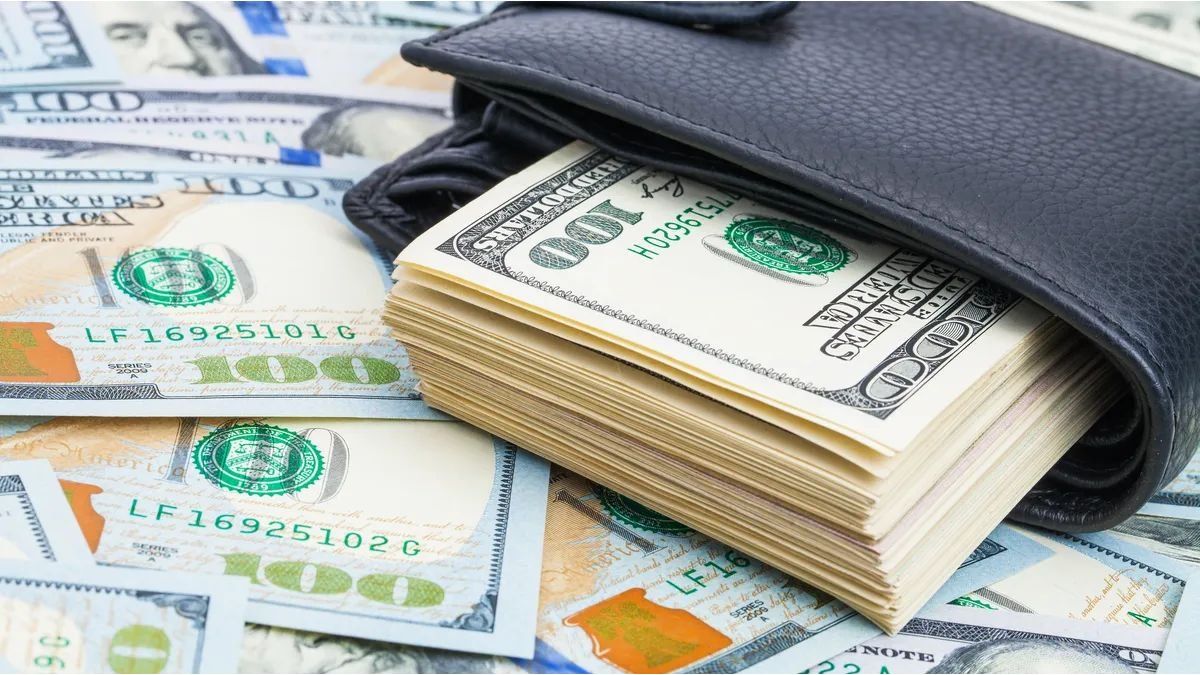In turn, the MEP dollar up 44 cents and closed at $319.11with which the spread with the official reached the 88.6%.
For his part, he blue dollar, closed stable at $312and cut a streak of five casualties in a row, although the gap with the wholesale exchange rate reached 84.8%, and touched maximum of three weeks before the advance of the currency in the official market.
Financial dollars closed higher again, “In the face of a search for coverage, which is gaining more ground in the face of uncertainty due to the implications of the multiple sources of monetary issue after a seasonally higher demand for pesos that would fight as a counterpart during this month,” analyzed an operator.
“There does not seem to be room for many more ingenious shortcuts, but it would be necessary to strive vigorously to achieve a primary fiscal surplus, a price of the official currencies that allows an important current accumulation of reserves and general policies that encourage production, to switch to the negative overall expectations”indicated the consulting firm VaTnet Financial Research.
In terms of news of the day, Argentina and the United States signed a tax information exchange agreement to automatically receive data on the bank accounts that their citizens have in both countries.
Within this framework, the “caves”, where the blue dollars stop before leaving for some unknown account abroad, are noticing a sharp drop in activity. As Ámbito was able to confirm, before the tax information exchange agreement with the United States, many of the usual “operators” stopped capital flight.
For his part, he Government and the International Monetary Fund (IMF) last Friday they reached an agreement at the technical level to approve the third revision of the extended facilities agreement. The final approval is subject to the agency’s board of directors, which is expected to be this month and will allow the disbursement of some 6,000 million dollars.
The dynamics of the domestic market extends for only three days this week, given the inactivity on Thursday for the Day of the Virgin and on Friday for a bridge holiday for tourism purposes.
In the wholesale exchange market, the dollar rose $1.07 (+0.6%) to $169.16, through the control of the Central Bank (BCRA), which ended the day with a positive balance of about 74 million dollars before agro-export settlements for some 133 million dollars.
Thus, he added the sixth consecutive day with a positive net balance in his interventions, after the reimplementation of a special exchange rate for exports of the soybean chain. This amount is added to the US$457 million that the monetary authority acquired last week.
Thus, the total amounts to u$s531 million since the Export Increase Program (PIE) was reinstated, which establishes a differential exchange rate for the soybean complex of $230 per dollar, with which it aims to raise some US$3,000 million until December 31.
“If the current rate of net purchases and liquidation is maintained ($91 and $191 million daily), the agency could aim to capture $2.1 billion in the official exchange market. It becomes evident that for the Central to have a positive balance in the MULC, a more competitive exchange rate is needed,” they remarked from PPI.
“The evolution of the ‘soybean dollar’ will be the most relevant ‘driver’ in this short week”, affirmed Portfolio Personal Investments (PPI). “The amount by which the BCRA coffers can be increased in the remainder of December will be of fundamental importance”he added.
This Tuesday, the market will closely follow the verdict of the Justice in the case in which the current vice president Cristina Kirchner is being investigated for an alleged system of corruption related to public works when she was president of the country, another issue that has investors in suspense due to its political implications in the face of next year’s general elections.
Dollar in the world, Monday, December 5
In the world, the dollar advanced this Monday against the euro, the pound and the yen, after data showing that the Activity in the US service sector had a modest recovery in Novemberwhich led to speculation that the The Federal Reserve may not be able to apply less aggressive rate hikes anytime soon.
The Institute for Supply Management (ISM) said its non-manufacturing PMI rose to a reading of 56.5 last month from 54.4 in October, indicating that the service Industry, which accounts for more than two-thirds of the economic activity of the United States, it remained resilient despite interest rate increases.
“In light of the latest data from the United States, it can be deduced that inflation does not want to let up and that this could translate into more aggressive increases in interest rates by the Fed, while until Friday there were expectations of a possible relaxation”said a foreign currency trader.
The survey builds on data from last Friday that showed stronger-than-expected US job and wage growth in November. Consumer spending also accelerated in October. The string of robust reports has raised optimism that a recession could be avoided in 2023, with growth slowing sharply, while spurring speculation about how much rates will rise.
“The market is just guessing how aggressive the Fed needs to be to beat inflation,” said Joe Manimbo, a senior market analyst at Convera. Fed Chairman Jerome Powell said last week that the US central bank could slow the pace of its rate hikes “as soon as December.”
The dollar added 1.68% against the yen to 136.61, rebounding from Friday’s 3.5-month low of 133.62., while sterling, which hit a five-month high of $1.2345 in Asian trade on Monday, was down 0.94% at $1.2178. The euro was down 0.42% at $1.0494, after previously rising to $1.0585, its highest level since June 28.
The dollar index, that compares the greenback against six even currenciesfell 1.4% last week and lost 5% in November, its worst month since 2010.
In this context, US Treasury bonds extended yield, leaving the ten-year reference rate at 3.55% (+9bps), while, in the short term, two-year interest rate climbed 12bps to 4.39%.
Dollar in the region, Monday, December 5
Among the currencies of countries in the region, for its part, the losses were led by the Mexican peso, which traded at 19.7331 per dollar, with a depreciation of 1.9% compared to Friday’s price.
In addition, the Brazilian real depreciated 1.3%, to 5.2848 units per dollar, while the Chilean peso fell 0.9% to 888.80/889.10 units per dollar.
Meanwhile, the Colombian peso depreciated 1.3% to 4,840 units per dollar in its second day of decline; while the Peruvian currency, the sol, fell 0.2% to 3.845/3.846 units per dollar.
Qatar dollar price, Monday, December 5
The new qatar dollar -which includes 30% of the COUNTRY tax, 45% deductible from Income Tax and Personal Property TaxY a new perception of 25% on account of Personal Assets- it advanced $2.40 and closed at $352.88. Thus, it widened the gap with the blue to more than $40.
This exchange rate applies to Consumption abroad with debit and credit cards over US$300 per month.
Price of the tourist dollar or card dollar, Monday, December 5
The tourist dollar or card -retailer plus COUNTRY Tax, and a perception of 45% deductible from Income Tax and Personal Property Tax for consumption with cards abroad of up to US$300 per month- it rose $2.10 to finish at $308.77.
Savings dollar price, Monday, December 5
The dollar savings or solidarity dollar-which includes 30% of the tax COUNTRY and 35% deductible from Income Tax and Personal Assets- rose $1.98 to $291.13.
Price of the crypto dollar, Monday, December 5
The crypto dollar or bitcoin dollar falls 0.4% to $318.52, based on the average among local exchanges reported by Coinmonitor.
Source: Ambito
I am a 24-year-old writer and journalist who has been working in the news industry for the past two years. I write primarily about market news, so if you’re looking for insights into what’s going on in the stock market or economic indicators, you’ve come to the right place. I also dabble in writing articles on lifestyle trends and pop culture news.




